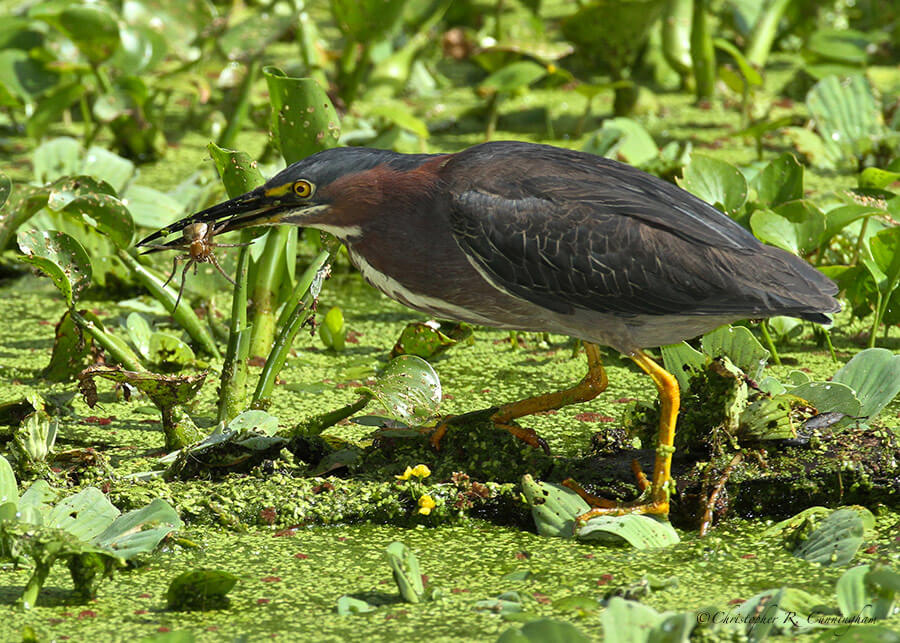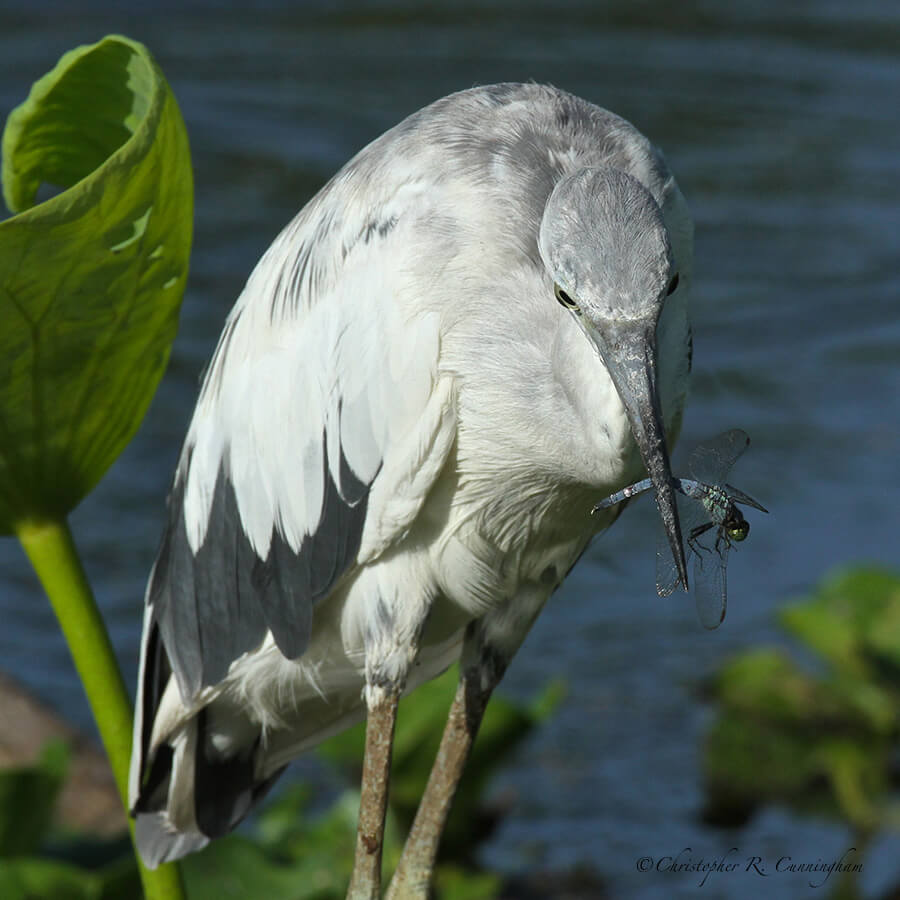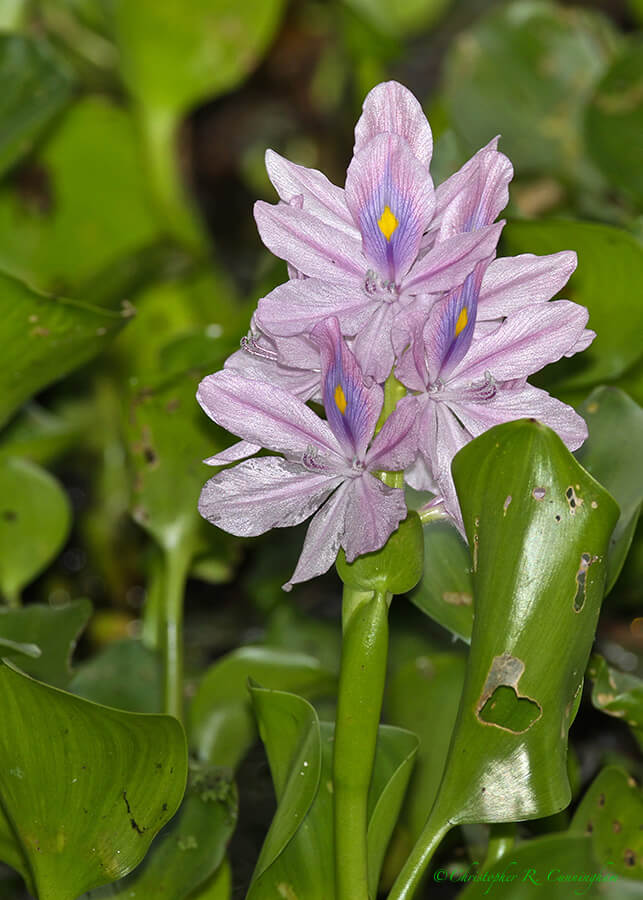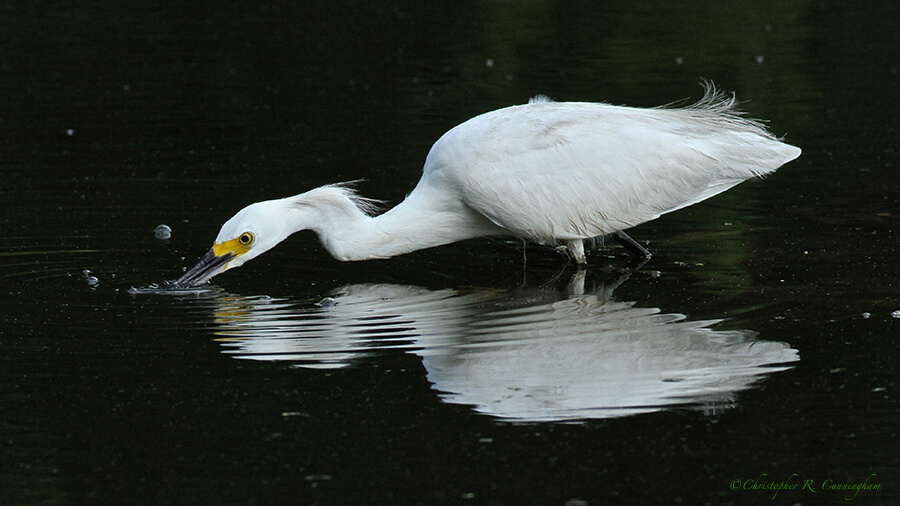
There has been a bumper crop of fishing spiders this year at Brazos Bend State Park, and I have seen Little Blue Herons and Green Herons eat them, sometimes one spider right after another. Some years it seems as though wader diets consist of a fairly uniform mix of aquatic vertebrates and invertebrates, especially crawfish. This year, rather than crawfish, waders seem to be relying more heavily on smaller invertebrate prey items than in recent years. Lots of aquatic insect larvae, dragonflies, adult aquatic bugs and beetles, and spiders are being consumed along with the occasional small fish, frog, or tadpole.

Invertebrates are highly sensitive to environmental conditions of temperature, humidity, and rainfall. This year’s unusually cool, dry spring may have led to a different mix of potential prey for waders. The Upper Texas Gulf Coast is already behind in rainfall for the summer and water levels already appear low, perhaps impacting aquatic vertebrate numbers as well.
Many of the invertebrates (spiders especially) I see waders take are living among the Water Hyacinth that is growing profusely in some areas of the park. Water Hyacinth is native to the Amazon Basin, but has been imported to many areas of the world where it has become a major nuisance by crowding out and shading native plants and choking waterways.

Besides keeping an eye (and a lens) out for interesting wader predator-prey relationships, I am always on the look-out for hunting techniques. For example, Snowy Egrets are known for shuffling their bright yellow feet in the shallows to flush out prey. Several times over the past weeks I have seen a Snowy Egret (I think it was the same bird) employing a bubble-blowing technique on Elm Lake. This bird was (presumably) blowing bubbles to attract prey. Perhaps the bubbling simulates a small struggling animal, attractive to fish and other aquatic predators. Between bouts of bubbling, this bird also opened and closed its beak, a fishing technique I have seen employed by Black-crowned Night-Herons and Great Egrets, and one that also sends ripples out into the water. One time during this process this Snowy Egret grabbed a small aquatic invertebrate–it was down the hatch too fast to tell for sure what it was, although it was about the right size and shape for a water tiger (larval predaceous diving beetle). On another occasion, the egret was clearly catching small fish with this technique. Time will tell if anything bigger can be attracted by blowing bubbles!

©2013 Christopher R. Cunningham. All rights reserved. No text or images may be duplicated or distributed without permission.